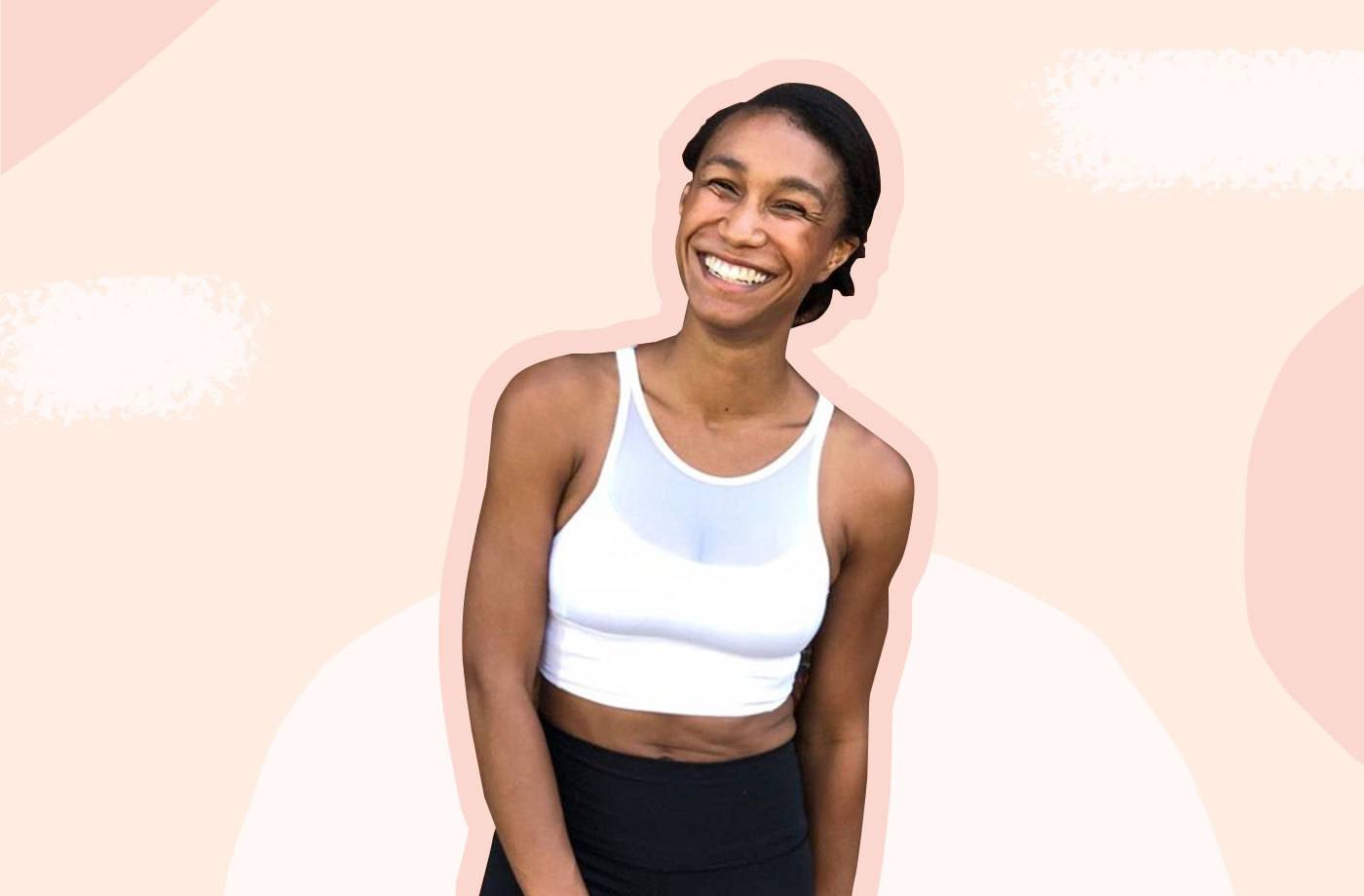
August 09, 2019 at 08:34AM by CWC
Nicole Cardoza, a yoga teacher, entrepreneur, and advocate, opened Instagram in late June and was surprised to see her own face smiling back at her from Yoga Journal‘s feed. The photo was part of a post asking readers to vote on who should be featured on the next cover of YJ, and Cardoza was surprised because she had already done the photo shoot for said cover. But now, the publication was asking its readers to decide whether she (a black woman) or a white woman would be a better fit.
The magazine claimed that the either/or survey served to predict which woman’s picture would sell more issues (and they later apologized for posting it), but Cardoza was unconvinced. To the entrepreneur, whose work focuses on widening the wellness space to include an increasingly diverse audience, the survey was a giant step backward. And she told her 12,000-plus followers as much in an Instagram post of her own. “Look at these two photos. Two people, in casual dress and casual postures, giving the camera warm and welcoming vibes. There’s no names, no storytelling, no context about what we might offer between the pages. What are they asking the community to choose between?” she wrote.”I don’t have the answers. But I know how this made me feel. I know how this comparison has made me feel for my entire life.”
The handful of paragraphs Cardoza shared in her post were filled with heartfelt urgency and were punctuated, finally, with a call to action. The kind of exclusion and erasure laid bare by Yoga Journal‘s decision to post its survey was “disheartening and disappointing,” she wrote. But “it’s nothing new. It’s the cost of doing business. It’s why I’m launching a venture fund next year to invest in underestimated entrepreneurs in wellness (that, ironically, was going to be announced in this issue),” she wrote. On August 26th, Cardoza will award the first series of “micro-grants” in the amount of $5,000 each to three entrepreneurs working to close the wellness gap.
“Capitalistic-based decisions on whose bodies are represented and celebrated in the wellness industry is a major reason why it remains an exclusive, white space that maintains systems of oppression.” —Nicole Cardoza, founder of Yoga Foster
ADVERTISEMENT
ADVERTISEMENTKate Spade Autumn/Winter Sale |
“Capitalistic-based decisions on whose bodies are represented and celebrated in the wellness industry is a major reason why it remains an exclusive, white space that maintains systems of oppression,” Cardoza tells Well+Good. “Let’s be clear: [The YJ situation] didn’t change my approach to the work that I do. This is something I’ve experienced my entire life as a leader in this industry alongside so many other marginalized people. It’s why I got into this work in the first place, and will continue to stand against any instance of oppression or harm.”
Yoga Foster, Cardoza’s non-profit dedicated to teaching yoga in schools, has brought the practice to 512 schools across 48 states. Driven by the mission to improve elementary school students’ health, it approaches well-being in a multidimensional and far-reaching way. Mental and physical health are the cornerstones of Yoga Foster’s mission, but its bedrock is Cardoza’s desire to make wellness available to everyone, everywhere.
Below, Cardoza shares what inspired her to start her grant program, along with how everyone can play their part in handing the microphone to people who have been underserved by the current wellness industry.
//www.instagram.com/embed.js
Well+Good: How did the wellness space call you?
Nicole Cardoza: I came across yoga when I was in college, and it was the first practice that made me feel at home in my body. I started a volunteer yoga program at a school in the Lower East Side [of New York City], and saw firsthand the disparity between wellness in the classroom and the surrounding community. Since then, I’ve been really focused on developing platforms that help increase accessibility to wellness practices.
Can you tell us a bit about the origins of the Impact Grants you’ll be awarding?
Three $5,000 awards will be given to entrepreneurs who are driven to close the wellness gap in their own, innovative ways. I’ve only just started raising money for a bigger grant in the future, but I’ve launched a micro-grant in the meantime to spark the conversation. This $5,000 grant will go directly to the chosen entrepreneurs to support their overall well-being as they grow their business.
As a person of color and a woman, it’s difficult to be an entrepreneur who’s underestimated, somebody who’s not seen all the time. A study from 2017 published in Pitchbook found that solo female founders get about 2 percent of venture capital funding. When you look at people that are on the boards of venture capital firms, they won’t necessarily look like you, and knowing that is the larger space that we’re operating in is already difficult.
On top of that, people practicing wellness, people who deserve to be leading companies, aren’t “supposed” to look like me. Many times, I’ve walked into a room for a fundraising conversation and the people at the front desk ask me if I’m lost, if I’m delivering food. I remember I had an hour-long meeting with potential investors, and they spent the first 10 minutes asking questions about my natural hair. Those are 10 minutes that I don’t get back. It’s like, that’s a tax that gets taken away from me and people who look like me. With the Impact Grant, I wanted to create more systems where we are reallocating wealth to underestimated entrepreneurs and creating a space where their needs, their work, and their impact comes first.
Who, specifically, do you see being left out of the wellness conversation who can benefit from a grant like this one?
We’re looking for people who are underestimated; people who you don’t normally see running companies. People who are building something that can last beyond themselves. We’re looking for non-profits or for-profit organizations that are creating sustainable business models. We’re looking for people in the LGBTQ+ community. For people in the trans community, which is often overlooked in terms of creating and cultivating safe spaces. The sexual health movement is often forgotten, too—especially one that centers on the bodies of marginalized women. Most feminist movements have been designed for white women or cisgendered women. The indigenous communities and their right to be well is also taken away and omitted. So much of wellness is also narrated from an able-bodied perspective.
You’re working on another project as we speak. What’s its mission?
I just hit the road for Yoga Foster’s Mat Bus Tour, which will be traveling to Salt Lake City, Chicago, Detroit, Philadelphia and more between July 26 and September 23. We rented a school bus with a co-working area and space for a studio. We’re driving it across the country and doing donation-based yoga classes. We’re hosting mat drives, getting into conversation with wellness communities, going to schools, practicing with our students, and filming a documentary along the way. It’s probably one of the most ambitious projects [I’ve ever done].
When you think of the future of wellness—both as an industry and a way of life—what do you hope to see?
Ultimately, I want people to reclaim what it means for them to be well. For me, wellness looks like doing yoga and meditating every day. I spend as much time outside as I can and I’m a really big fan of masturbation. I’m always on the phone, I’m always on my computer, so I try to take away as many screens as long as I can in the evenings.
ADVERTISEMENT
ADVERTISEMENTSports Direct Free Delivery on All Orders! |
All of us inherently have the right to feel good. It’s not up to society to tell us our definition of being well. It’s not up to our partners. It’s up to us. When we see injustices happening to ourselves—or more importantly—to communities that can’t speak for themselves, it is our job to reclaim that basic right. Take the Yoga Journal thing. It was my inherent right for the sake of my own well-being to call out something like that. That’s difficult to do—for myself, and for all marginalized people who feel this way. What I hope is that I can be somebody who helps others realize that wellness is their right.
This interview has been edited and condensed for clarity.
Have you read Well+Good’s “Wellness in Color” column, written by Latham Thomas? Check out her interviews with Sinikiwe Dhliwayo, the founder of Naaya Wellness, and Gianne Doherty, founder of the conference series, WELL Summit.
Author Kells McPhillips | Well and Good
Selected by CWC
ADVERTISEMENT
ADVERTISEMENTUp to 30% off Gift Sets |





